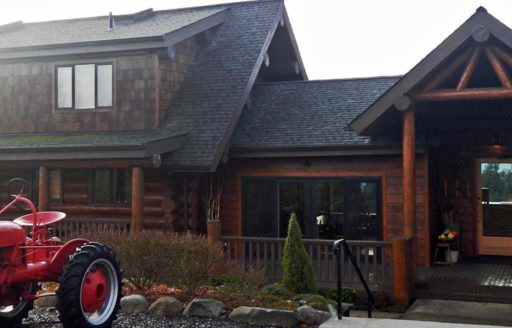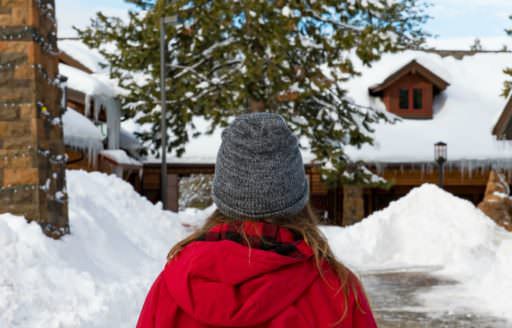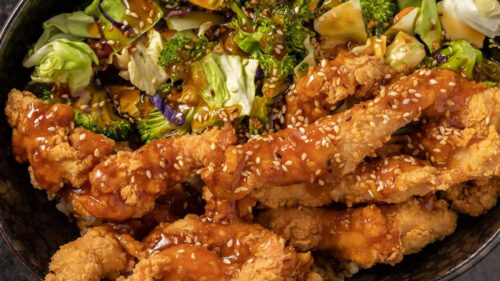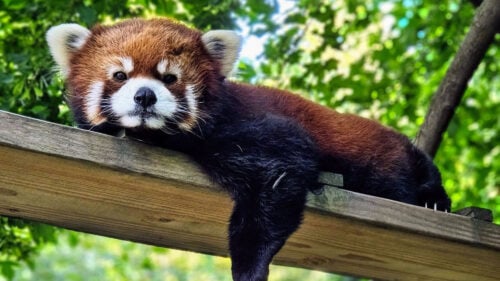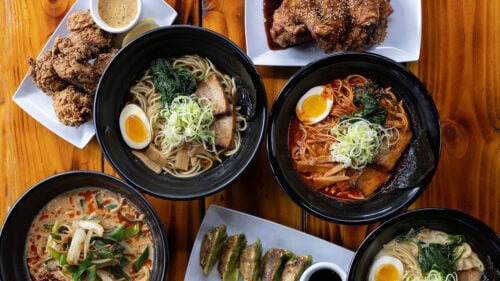Each fall the Japanese maples at the Portland Japanese Garden pop in brilliant shades of red and orange, bringing crowds to witness and capture the beauty.
That’s not the only draw at one of the state’s visitor biggest attractions. Steps away you can get lost in the lush botanical gardens, visit koi fish and a waterfall, find sanctuary in a zen garden and stroll across a walking path to the Tea Garden, designed to help visitors shed their concerns about the outside world. You can take a docent-led tour or explore on your own. You can even take part in free events like a traditional tea ceremony demonstration. I joined a group of 50 visitors recently who watched the chadō in awe, flashing back to the way my aunts walked with soft slippers on the tatami mats in my grandmother’s home.
In part thanks to Oregonians’ fascination with ancient arts — plus other factors like direct flights between Portland and Japan, a similar cultural and environmental ethos, and widespread sister-city relationships that have flourished over the decades — Japanese culture has never been bigger in Oregon.
Just look at the multitude of Japanese-inspired and Japanese-imported businesses that have taken root in the Beaver State — everything from onsen-style hotels and outdoor brands to producers of noodles, miso, tofu, stationery products, wasabi, knives, Japanese confections and more. It used to be that grocery empire Uwajimaya, located in Beaverton, was the only place to find Asian snacks in the region. Now there are Japanese shops and cafes studded across Portland; a winter sake and Japanese culture festival that launched in 2022, bringing many local businesses together; and even a Portland-based Japanese grocery and sake delivery service, Fulamingo, launched during the pandemic to help people find their favorite snacks.
As a third-generation Japanese American who grew up in the melting pot of Hawaii, I’d never appreciated being surrounded entirely by Asian cultures during my childhood. As an Oregon resident for my entire adult life, it’s delightful to see so many Oregonians and visitors getting to experience Japanese heritage and influences. Here are a few ways to dive into these experiences.
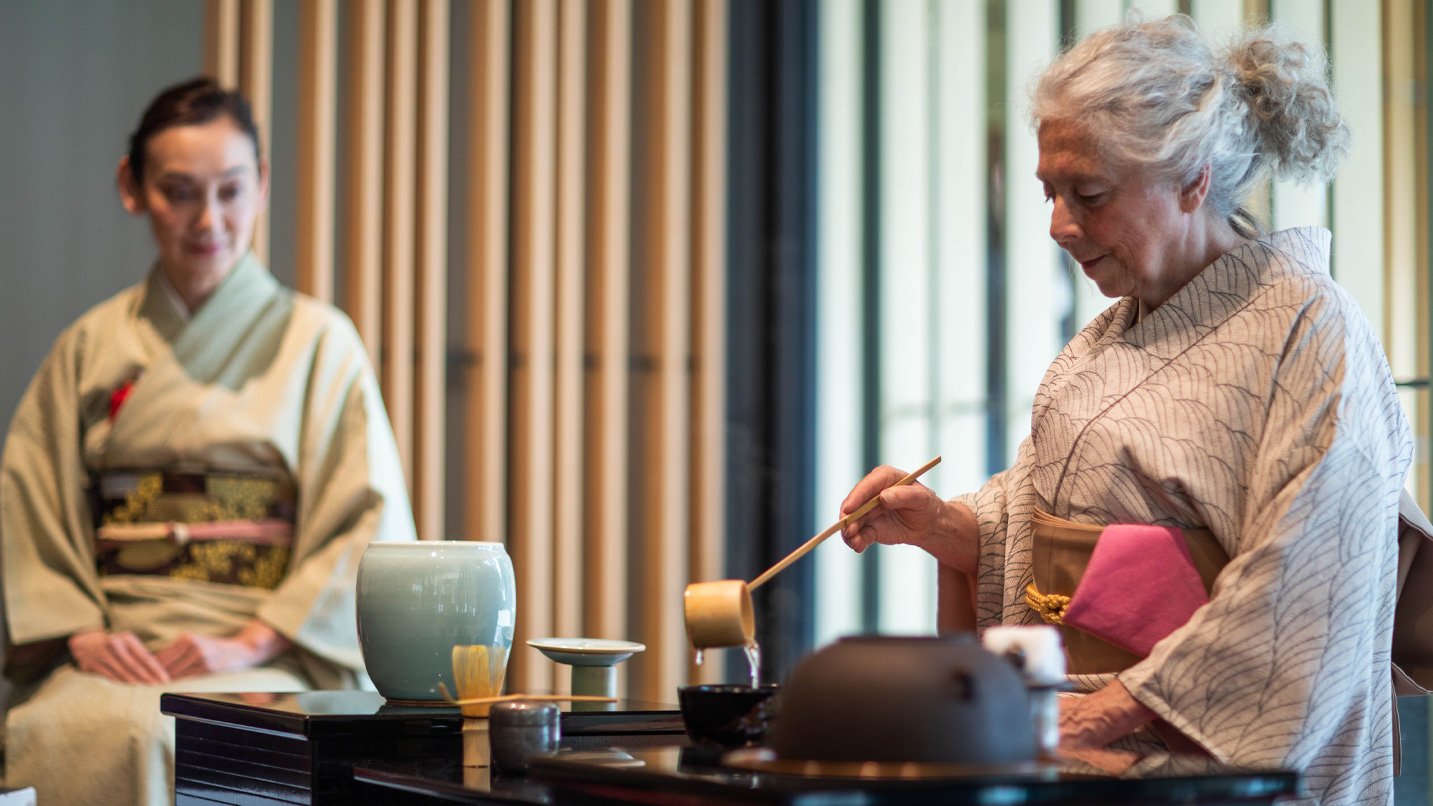
History, Culture and Community
Japanese Americans first immigrated to Oregon in the 1880s, settling in what has become known as Japantown or Old Town/Chinatown in Portland. You can learn all about this history at the Japanese American Museum of Oregon, still in that neighborhood. Thought-provoking displays and artifacts trace the impact of the Japanese community on Oregon through the current day, including Executive Order 9066 in 1942 — which forced people of Japanese ancestry on the West Coast to move to internment camps.
Much of that history is also reflected at the public Hikaru Mizu Japanese Garden in Ontario, built as a memorial to the Japanese Americans interned during World War II and in tribute to those who fought in World War II. There you’ll find a meditation garden, a koi pond and other traditional features. In Gresham Tsuru Island features a Japanese garden, walking paths and over 5,000 river rocks hand-placed by a group of Japanese American volunteers as a gift for the garden’s rebirth in 2011. The History Museum of Hood River County also has a terrific exhibit about Japanese American farmers and the injustices they suffered during World War II.
The state’s crown jewel of Japanese culture is the Portland Japanese Garden, where the price of admission lets you enter a fairy-tale wonderland of garden spaces for a tranquil walk, an authentic teahouse experience or a public event — everything from ikebana (flower arranging) to art and musical exhibitions. The sakura (cherry blossoms) from March to April and the vivid colors of the Japanese maples from September to October offer peak times to visit. Viewing the cherry blossoms at Tom McCall Waterfront Park is another spring tradition, the trees gifted by Portland’s sister city of Sapporo in 1990.
Holidays are a great time to take part in cultural traditions. Japanese New Year, or shōgatsu, is celebrated in January with mochitsuki festivals that welcome the public to help pound and eat mochi, a chewy rice cake. Check out the Oregon Buddhist Temple in Portland and other locations across the state for festival details. Another major celebration is Portland’s Obon Fest, held in August to commemorate ancestors with traditional dancing, lanterns and food. These free community events are family-friendly and open to all.
Many fairs and festivals throughout the state host local Japanese-arts groups like Portland Taiko, Obukan Kendo Club, Team Japonesque dancers and more. Ikoi no Kai is a Southeast Portland-based community program of the Japanese Ancestral Society of Portland, established in 1979 to bring people together to sing, play cards and move with lessons in tai chi and chair hula. Staff offer blood-pressure tests and all age groups are invited to enjoy meals prepared from scratch, with donations like fresh salmon or cucumbers from the garden.
To find more events and ways to connect, contact the Japanese American Citizens League — the oldest and largest Asian American civil rights organization in the U.S. — or a similar group in your region, like the Southern Oregon Japanese Association.
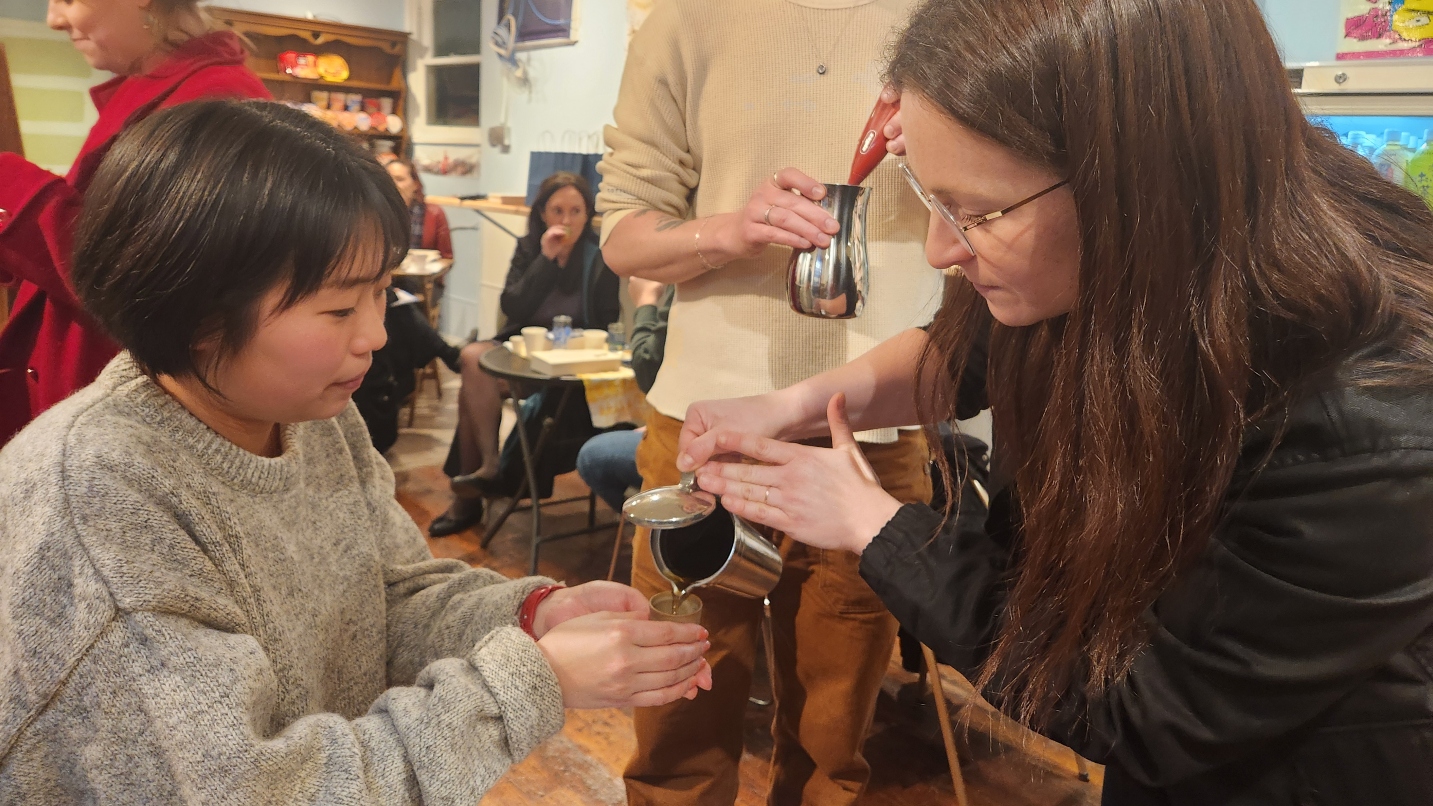
Sake, Beer, Wine and Tea
You can’t go far in Oregon without running into a Japanese food or drink business, or one with Japanese-inspired dishes or ingredients. Just ask the chefs and makers why they’ve landed here and they’ll likely cite the high quality of Oregon’s bounty — from seafood to mushrooms — and even the purity of water from our mountain streams.
SakéOne in Forest Grove, for instance, is the longest-running home base for craft sake in Oregon and the U.S., to which they credit the unmatched water from the Willamette Valley. Spend the afternoon sampling a flight of sake on the patio and taking a tour of the sake-making facility.
In 2022, Nina and Dennis Murphy launched a new revolution in the Portland sake scene from their tiny shop in Southeast Portland. Sunflower Sake is a bottle shop and education-focused tasting room with events and classes, a sake club and an ever-changing collection of sake curated from different regions of Japan by Nina Murphy, whose background is in wine. Some of the sake at Sunflower can’t be found elsewhere in Oregon or the U.S.
Oregon’s innovative craft brewers are also inspired by Japanese ingredients. A collaborative summer beer festival in Portland called Fuji to Hood involves Oregon brewers working with their Japanese counterparts on small-batch beers with unique ingredients such as Japanese black honey, sansho peppers, green tea, seaweed and more.
To sample wine produced by a Japanese winemaker, head to Shiba Wichern Cellars (by appointment only) in the Willamette Valley, where co-owner/winemaker Akiko Shiba focuses on small-batch reds, whites, roses and sparkling wines made with minimal intervention.
Japan’s love for Oregon-made products continues to grow; Portland’s beloved Smith Teamaker even has its own location in Tokyo, serving its innovative blends, flights and food pairings.
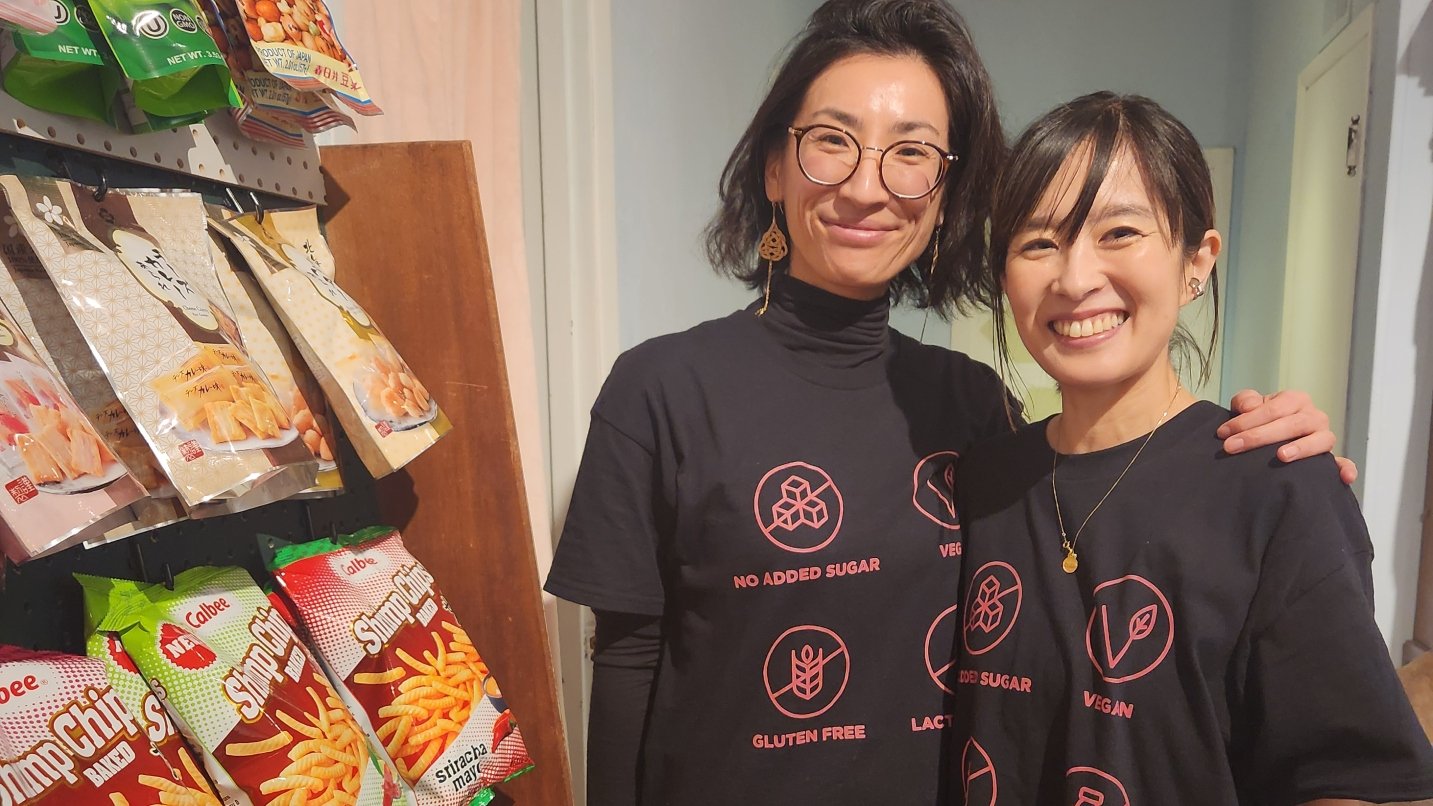
Japanese Food From Sushi to Sweets
Whether you need a snack or a multicourse meal inspired by Japan, you’ll find many options in Oregon, from ramen to sushi. The ramen empire Afuri uses Oregon spring water for broths flavored with Japanese ingredients like yuzu (citrus). Some of the state’s most beloved Japanese restaurants include Syun Izakaya in Hillsboro, where you can find some of the freshest sushi, including the seafood-focused Hokkaido chirashi bowl, and Eugene’s Izakaya Meiji Company, a Japanese tavern perfect for sharing plates and inspired cocktails. In Bend, visitors can sidle up for Japanese bar snacks like grilled yakitori meats and more at the brand-new Yokocho Izakaya.
Japanese food fits every budget, so be sure to seek out street-food snacks and comfort-food lunches like mafa chicken, as well as high-end menus like at Takibi, the award-winning restaurant at the Japanese outdoor outfitter Snow Peak’s U.S. headquarters. The ramen here features imported noodles made from snow-aged wheat flour — a centuries-old Japanese method that enhances the sweetness and flavor of the wheat.
Food carts across the state serve up craveworthy plates using hyper-seasonal ingredients, like maitake mushroom curry udon at Dozo Food Truck in Springfield and donburi made with seasonal fish at Yabai Nikkei in Eugene. Portland’s popular Tokyo Sando cart keeps visitors coming back for their signature curry croquette sandwich with a Scotch egg and umami-packed black garlic sauce.
Ki Coffee (with locations in Beaverton and Wood Village) is a great spot for a matcha latte and a breakfast sandwich. Behind the Museum Café (next to the Portland Art Museum in downtown Portland) pairs snacky dishes like onigiri (filled rice balls) or wasabi chazuke (rice steeped in green tea) with house-roasted coffee.

For those famous katsu sandos (fried cutlets on shokupan, or housemade fluffy Japanese white bread), head to Japanese bakeries like Oyatsupan in Beaverton or Tanaka in Portland, Tigard and Gresham.
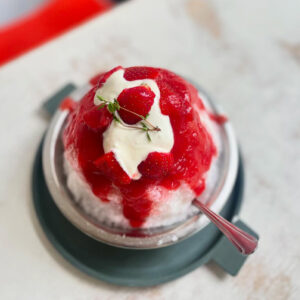
For sweet treats at your coffee break, Soen is your spot for the favorite summer treat kakigori (light and fluffy Japanese shaved ice), as well as pastries and sushi rolls.
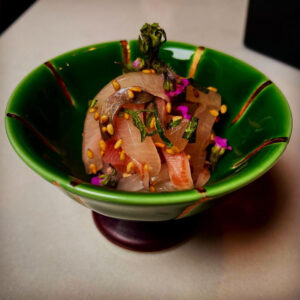
Nodoguro in Portland has been a shining star since starting as a pop-up a decade ago. James Beard Award-nominated chef Ryan Roadhouse prepares omakase (chef’s choice) tasting menus with up to 25 courses for a 2.5-hour tasting experience based on different themes, like cherry blossom season.
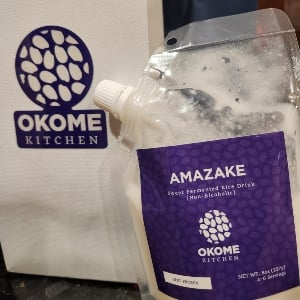
Amazake is a naturally sweet, plant-based drink launching at Portland farmers markets, sold by Portland-based Okome Kitchen. The Japanese founders were inspired to bring the time-honored beverage to Portland to share the health benefits.
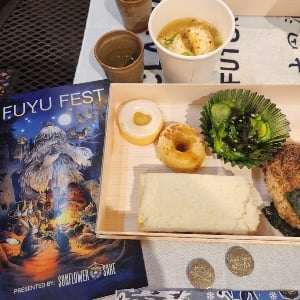
The annual Portland winter festival of sake and Japanese culture, Fuyu Fest (held in late February) brings together local and international Japanese innovators including chefs, mixologists and other creators.
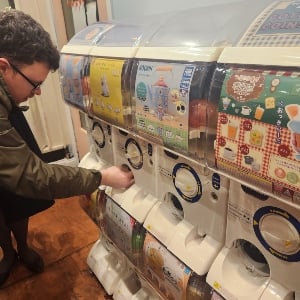
A gachapon, or toy vending machine, is a beloved part of Japanese culture. Reggie’s Manga Shop is home to a row of “gacha” machines for customers of all ages.
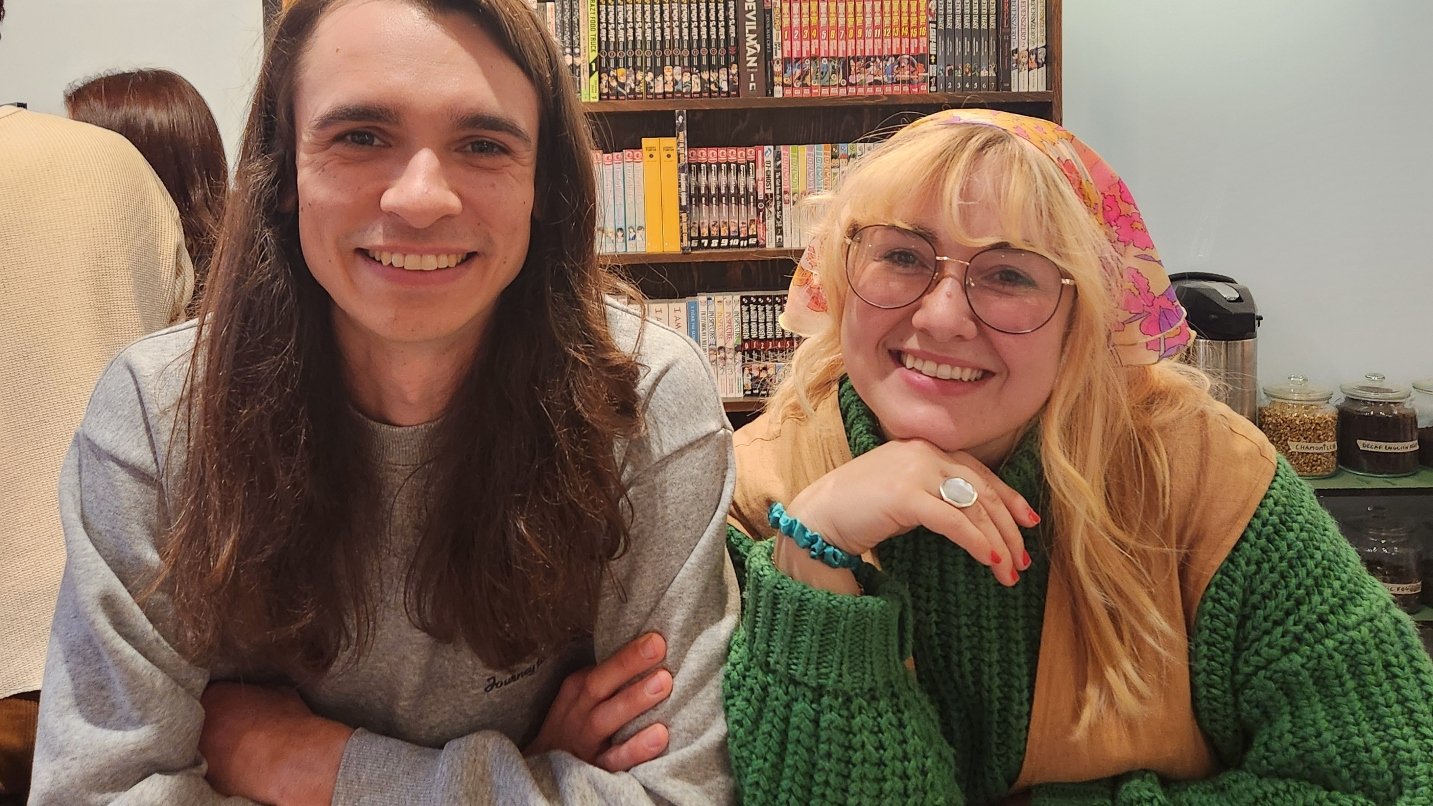
A New Wave of Japanese Culture Synergy
Kryston Skinner and Devon Sifford both grew up in small towns without access to their favorite pastimes: Japanese manga and anime. The traditional Japanese forms of comic books and graphic novels and Japanese TV and film are a staple of childhood in Japan and enjoyed by all ages across the world. In Portland they decided to take inspiration from their travels to Japan to open a hub for fellow manga and anime lovers in the community, especially youth. Reggie’s Manga Shop (which officially opens March 1, 2025) hosts a curated selection of manga as well as Japanese convenience store-style snacks like homemade egg salad sandos made on thick shokupan (Japanese milk bread). They’ll host events and clubs and aim to be a connector in the community that has emerged in recent years, in part thanks to the energy of Sunflower Sake and Fuyu Fest (meaning “winter” fest).
As the only sake festival in the Pacific Northwest, Fuyu Fest aims to be a bridge between sake lovers in Japan and the Pacific Northwest. Dennis and Nina Murphy of Sunflower Sake founded the festival to educate people about sake and celebrate the special wintertime culture in Japan through speakers and panels, expert demonstrations and food and drink vendors. Winter in Japan is seen as a special time, with cozy traditions fresh crab and hot pot, yukimizake (sake plus snow watching), okan (hot sake) and the release of freshly made sake, called shiboritate.
Some past partners at Fuyu Fest have included Southeast Portland’s Yellow Heart Sunshine Bakery, which makes cheery cookie buns; Electrica, a Northwest Portland coffee house that does pour-overs using koji-fermented beans from Lone Pine Coffee in Bend; Obon Shokudo in Southeast Portland, which makes vegan Japanese comfort food; Not Umami’s Cooking, a Willamette Valley caterer who makes modern bentos; and Heyday PDX, which makes special yuzu and mirin-glazed mini donuts for the festival. Portland chef Jun Okada, who hails from Hokkaido, has given demonstrations about how to break down a whole winter steelhead and utilize each of its components, head to fin, at home.



